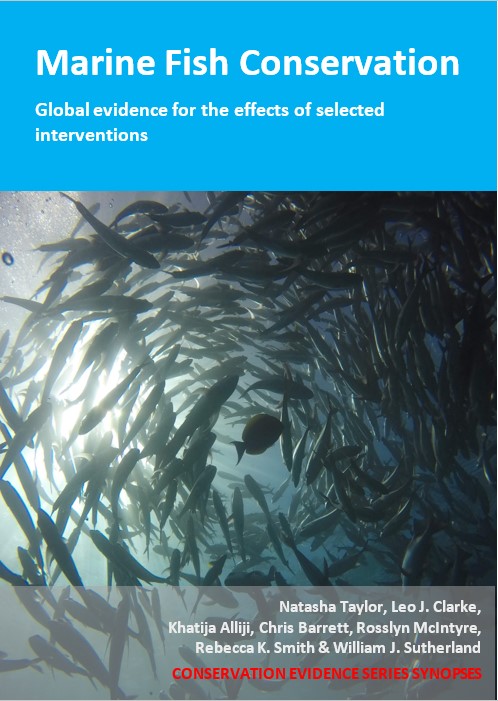Establish move-on rules for temporary, targeted fishing restrictions or closures when a catch or unwanted catch threshold is reached
-
Overall effectiveness category Awaiting assessment
-
Number of studies: 2
View assessment score
Hide assessment score
How is the evidence assessed?
-
Effectiveness
not assessed -
Certainty
not assessed -
Harms
not assessed
Study locations
Supporting evidence from individual studies
A replicated, controlled, before-and-after study in 2008–2009 of four large, fished areas of seabed in the North Sea and North Atlantic off Scotland, UK (Holmes et al. 2011) found that establishing move-on rules for temporary, targeted fishing restrictions or closures when a catch or unwanted catch threshold is reached, resulted in reduced fishing effort and overall discards and landings of Atlantic cod Gadus morhua. Data were not tested statistically. Of 144 temporary real-time closures implemented in 2009 there was a reduction in fishing activity (measured as change in number of fishing data points or pings recorded by the Vessel Monitoring System 14 d pre-closure to 14 d closure period) for 130, by 10–20 pings for the majority (105), estimated as a reduction of 10–40 h trawling. Fishing activity similarly increased when areas reopened. The reductions gave an estimated overall annual decrease in cod catch (landings and discards) of 707 t. Real-time area closures (equivalent to 7.5 square nautical miles; 21 days duration; maximum of 12 at any one time) were implemented in 2008/09 for Scottish vessels fishing in the seas around Scotland, divided into four zones, to control fishing effort and reduce cod mortality and discarding. Closures were triggered when cod catches exceeded 40 cod/hr and from monitoring analyses of landings and vessel monitoring data in each zone. Data were collected in 2008–2009 from landings, observer trips and Vessel Monitoring Systems that record activity of vessels fishing in and around the closure areas. Activity by non-Scottish vessels not required to adhere to closures was also recorded.
Study and other actions testedA before-and-after study in 2002–2013 of two fished areas of seabed in the northeast Atlantic Ocean off the coasts of Scotland, UK (Posen et al. 2014) reported that after move-on rules were established for vessels when a catch threshold limit was reached fishing effort and landings of blue ling Molva dypterygia decreased, compared to before. Data were not tested statistically. Across both areas and during the spawning season of blue ling, in 2009–2013 after move-on rules were established fishing effort (744–1,901 h) and average blue ling landings (137 t) were lower compared to 2002–2008 before rules were set (fishing effort: 1,060–2,995 h; landings: 304 t). In January 2009, rules were established for vessels fishing within two defined areas (edge of Rosemary Bank and along the Scottish continental shelf) identified as blue ling spawning grounds. The rules prohibited the retention of >6 t of blue ling/trip; at which limit the vessel must cease fishing immediately and leave the area, not returning (to either area) until the catch is landed and with no discarding of blue ling permitted. Fishing effort data from 2002–2013 were taken from Vessel Monitoring System (VMS) data of all UK vessels ≥15 m. Landings data of ling were taken from vessel logbooks and sales information.
Study and other actions tested
Where has this evidence come from?
List of journals searched by synopsis
All the journals searched for all synopses
This Action forms part of the Action Synopsis:
Marine Fish Conservation





)_2023.JPG)














